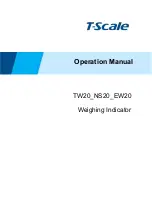
Section 2: General operation
Model 2651A High Power System SourceMeter® Instrument Reference Manual
2-24
2651A-901-01 Rev. A / March 2011
NPLC caching
NPLC caching speeds up operation by caching A/D reference and zero values for up to the ten most
recent measurement aperture settings. Whenever the integration rate is changed using the SPEED
key, or a user setup is recalled, the NPLC cache is checked. If the integration rate is already stored in
the cache, the stored reference and zero values are recalled and used. If the integration rate is not
already stored in the cache, a reference and zero value are acquired and stored in the cache. If there
are already ten NPLC values stored, the oldest one will be overwritten by the newest one. When
autozero is off, NPLC values stored in the cache will be used regardless of how old they are. If there
are no entries in the cache for the aperture being used, the unit will acquire them when the first
measurement is made. NPLC caching applies when using the integrating ADC. NPLC caching does
not apply when the fast ADC is used.
Basic source-measure procedure
Front-panel source-measure procedure
Use the following procedure to perform the basic source-measure operations of the Model 2651A.
The following procedure assumes that the Model 2651A is already connected to the DUT as
explained in
(on page 2-42).
WARNING
Hazardous voltages may be present on the output and guard terminals. To prevent electrical
shock that could cause injury or death, NEVER make or break connections to the Model 2651A
while the output is on. Power off the equipment from the front panel or disconnect the main
power cord from the rear of the Model 2651A before handling cables connected to the outputs.
Putting the equipment into standby does not guarantee the outputs are not powered if a
hardware or software fault occurs.
Step 1: Select and set source level
Perform the following steps to select the source and edit the source value:
1. Press
the
SRC
key as needed to select the
V-Source
or
I-Source
as indicated by the units in the
source field on the display. The flashing digit (cursor) indicates which value is presently selected
for editing.
2. Move the cursor to the digit to change, then press the navigation wheel
to enter the EDIT
mode, as indicated by the EDIT indicator.
3. Use
the
RANGE
keys to select a range that will accommodate the value you want to set. See
(on page 2-65) for more information. For best accuracy, use the lowest possible source
range.
4. Enter the desired source value, then press the
ENTER
key or the navigation wheel
to
complete editing.
















































